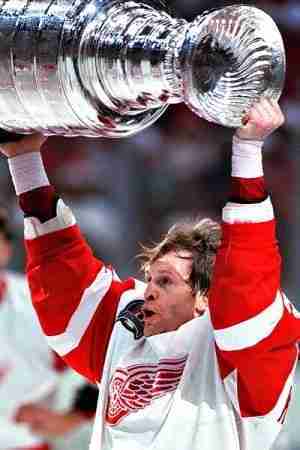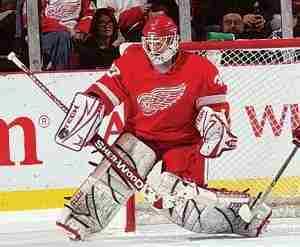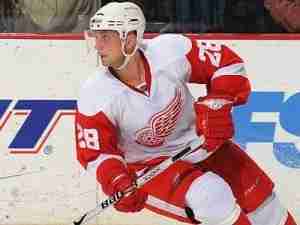68. Larry Aurie
One of the few stars left yet to be enshrined from the “old time hockey era”, Larry Aurie was a master of the penalty kill and was dubbed the “The Little Rag Man” for his entertaining puck handling while shorthanded. Famed Red Wings owner James Norris dubbed the diminutive (he was only 5 ft 6) as the heart and soul of the Red Wings. He may have been one of the smallest NHL players, but he was also one of its toughest. Had Aurie not suffered a severe leg injury in 1937, his career totals would have likely been much higher as he never did recover properly. His number #6 was retired by the Red Wings but has been inconspicuously omitted from the rafters in Detroit’s home arena. Perhaps, if he was posthumously honored in Toronto, he would properly be honored in Detroit as well.
39. Vladimir Konstantinov
It might seem a little laughable now, but there was a time that all Russian players were considered soft. Vladimir Konstantinov may have been part of the 1980’s Soviet Red Army team but he was a man who was seemingly bred for the NHL as he was anything but “soft”. Konstantinov had an instant impact on the pros with the Red Wings. He was literally a pest who made it exceptionally difficult for opponents to score. This was reflected by his high plus/minus tallies. Konstantinov’s last season saw him as the Norris Trophy runner up and hoist the Stanley Cup. Less than a week after that triumph, Konstantinov was in a horrible limousine accident that put him in a coma and literally put him in the fight of his life. Needless to say, Vladimir never played again, though if he had it can be argued that he might be a much stronger candidate for induction than he is now.





